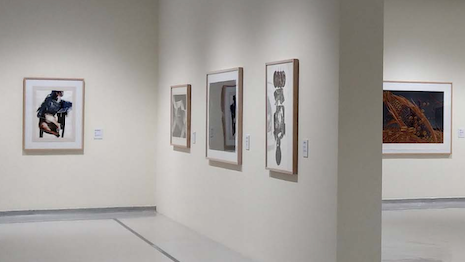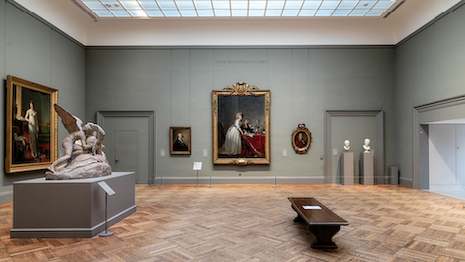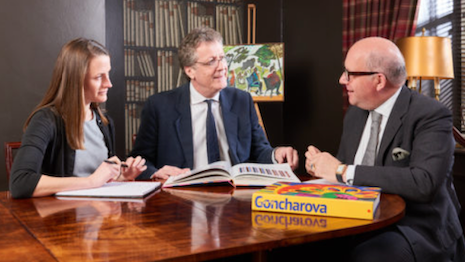 Beyond something to hang on the wall, fine art is becoming a popular strategy for growing wealth. Image credit: Unsplash
Beyond something to hang on the wall, fine art is becoming a popular strategy for growing wealth. Image credit: Unsplash
Two or three decades ago, the idea of using fine art as a way of growing wealth was fairly unheard of, and certainly questioned.
Since then, art investment has quickly become a popular way to diversify investment portfolios across the world. For its Wealth Report, Knight Frank spoke with Philip Hoffman, founder/CEO of The Fine Art Group, to uncover why fine art is increasingly viewed as an investment and being used as loan collateral.
A new area of investment
According to the UBS and Art Basel Report, 67 percent of individuals in 2021 purchased art solely as an investment to grow wealth.
Some of Mr. Hoffman’s clients and art investors buy museum quality art, place it in storage and sell it for a profit, without ever having seen the piece.
However, he advises that buying art for investment and for passion are not mutually exclusive, as many of his clients are knowledgeable and passionate about their collecting, using expert advice to consider what they buy.
While art as an asset or investment has risen over the years, Mr. Hoffman warns that investors can lose as much money as they make in the sector.
 Significant artwork used as collateral may be temporarily placed on exhibition in museums. Image credit: The Metropolitan Museum of Art
Significant artwork used as collateral may be temporarily placed on exhibition in museums. Image credit: The Metropolitan Museum of Art
He aims to direct his clients away from the losing side of art investment by providing expert advice, market insights and reports.
Art is increasingly being used by borrowers around the world, from high-end art dealers and collections to galleries who borrow against their art to free up capital so they can expand their existing collections.
The Fine Art Group also provides loans to private collectors, family offices and trusts with a similar strategy for acquiring more art. However, a significant proportion of its loans are used to support entrepreneurial growth.
These loans enable clients to release capital from their art and jewelry collections to fund business expansions and pursue other investment opportunities.
Typically, when artwork is used as collateral, it is placed into a fine art storage facility. However, significant artwork can be on temporary exhibition in museums.
If the collateral piece is on display in someone’s home, swapping artworks from elsewhere in the collection or making a high quality copy of the original as a temporary substitute is typical. Mr. Hoffman says it is not normal for collateral artwork to remain on a client’s personal wall.
The Fine Art Group most frequently lends against Impressionist, Modern and Contemporary paintings and sculptures.
These genres are more established within the international market, making the collateral more suitable than others where markets may be more selective.
The process for lending begins with a potential client providing images, catalogue descriptions and provenance information for the proposed collateral artworks. The Fine Art Group’s in-house art specialists review the collection and, if suitable, a term sheet is issued within 24 to 48 hours.
To qualify for a loan, each artwork must have a minimum value of $200,000, and the group typically requires at least two pieces of artwork per loan.
 The Fine Art Group uses a multi-step process to determine its collateral lending. Image credit: The Fine Art Group
The Fine Art Group uses a multi-step process to determine its collateral lending. Image credit: The Fine Art Group
Prior to the release of any capital, experts will physically inspect the artworks, or utilize the expertise of a local art conservator to carry out the condition checks on behalf of the group.
Provided the artworks are in good condition, the loan is usually funded within one or two weeks of the physical inspection. The Fine Art Group offers loans between $1 million to $150 million, with a 50 percent loan-to-value.
NFT as the next art frontier
Non-fungible tokens (NFTs) have rapidly emerged as a buzzword in 2021, as digital assets are sold for significant figures.
Auction house Christie’s sold its first purely digital artwork offered on the platform in March,
Mike Winkelmann, also known as the digital artist Beeple, posted a work of art online in 2007 and then created and posted a new digital picture every day for nearly 14 years. Minted exclusively for Christie’s, those individual pieces have been brought together in Everydays: The First 5000 Days and offered as a single lot sale, ultimately selling for $69.3 million (see story).
More recently, auction house Sotheby’s celebrated the 25th anniversary of rapper and entrepreneur Shawn Jay-Z Carter’s “Reasonable Doubt” album with a commemorative NFT.
Jay-Z commissioned artist Derrick Adams to create a one-of-one animated digital artwork that comments on and recontextualizes the album’s cover, which was sold by NFT in a single-lot auction. This was the first NFT-based collaboration for both the rapper and artist and the auction was the only official event authorized by Jay-Z to commemorate the album’s anniversary (see story).
While the NFT art market is experiencing a period of growth, Mr. Hoffman suggests that the risks in this area are too difficult to quantify to guarantee financial security to clients and investors.
He admits that NFTs are valuable assets, The Fine Art Group simply does not have the right expertise to determine how an NFT will change in value.